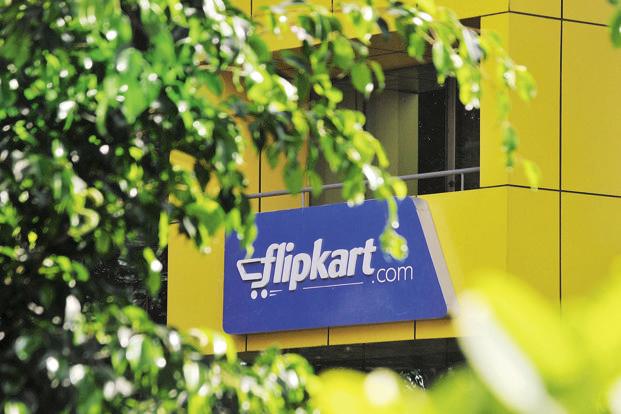The world is progressing each day and so is the spirit of entrepreneurship. The customer needs are on the rise and so is the need to maintain high levels of customer satisfaction as ‘customer is king’. This scenario gives ample scope for individuals and groups to map the value chain of the customer consumption process, identify the gaps and provide solutions that meet their requirements. Hence, innovative solutions are the need-of-the-hour. Adding to this is the attitude of individuals who want to foster entrepreneurship and stand on their own feet rather than rise up the ladder working for corporate giants. Hence, startups are born!
Strategy 1:
According to Zero to One by Peter Thiel, a company should grow small before growing big.” This essentially means the market for such kind of strategy would be niche in the initial phase but that can be scaled up once the idea is successful and customers are able to create a connect. Any startup should focus on a core competency that is a capable of solving a specific consumer need. This implies that having a Unique Selling Proposition (USP) that differentiates the startup from the others in the market.
Firms have to constantly keep looking for new avenues to expand. The next Steve Jobs would not be developing a computer but would instead be focusing on solving a different problem. Any startup today needs to understand the relevance of identifying a unique problem that they can solve, build around the same and create a monopoly for themselves. Only then can any business survive.
Example 1 – Zomato:
Zomato started with the intention of solving a basic need of saving the hassle of looking for good food options in any town or a city. Zomato is now every foodie’s goto site or a quick-fix for random restaurant outings. Today, Zomato boasts of a customer base of 11 million and is spanned across 22 counties since its inception in 2008. It has grown from a portal providing restaurant suggestions to an interactive platform where people share their personal experiences through comments and ratings which helps other users in filtering their choices.
Example 2 – Ola Cabs:
Bhavish Agarwal and Ankit Bhati, both IITians were all set to take up a challenging task of solving the ever-persistent issue of hunting and bargaining for cabs and the time wasted for these activities. Thus, Ola was born which provided the users the experience of booking a cab on their smartphones with prefixed prices. The cherry-on-the-cake was the GPS enabled technology of the app that helped in picking up and dropping passengers in the exact locations. Now, Ola is valued at 5 billion$ after the most recent funding of 225 million$ by Ratan Tata. It owns a fleet of 200,000 cabs across 85 cities in India.
Example 3 – Grofers:
The idea of grocery shopping is always perceived as a tedious task in the mind of an Indian consumer. The long waiting lines, the hunt for the ideal parking spot and drive to the store admist heavy traffic are the things which make grocery shopping a dreadful experience. Grofers now provides a one-stop solution to all the above problems by offering a free delivery (for purchases over 250 INR) and within 90 minutes of the time-of-order. This unique proposition has not been well received among both customers and investors who see an extremely high potential for the startup. Grofers has raised 46.5 million $ through 3 rounds of funding from investment giants like Sequoia Capital, Tiger Global etc.
Strategy 2:
Deriving inspiration from the existing success models does not mean replicating them. The needs of the market keep changing with time. What worked for some start up may not work for others. The competency that a firm develops has to be one of a kind. Crowding up in an existing market offers very little scope for growth. We have seen many examples in the past where a ‘Me-Too’ product seldom gets noticed by the consumers today.
Example 1 – Line
The number of options available for instant messaging apps are countless. However, only the ones that tapped a new market space could survive. Once people adapt to one product, they have very little incentive to switch. The app failed to take off despite heavy promotions and marketing. It had nothing new to offer.
Example 2 – Google+
Even though Google tried to use its existing brand name to capture the social media space, it could not succeed. It offered features that help one connect with people in their ‘circle’ and share information, media, etc. and tried to bring the best features of skype, orkut and facebook on a common platform. However, people are no longer ready to experiment with a new product in that space.
Example 3 – Coupon Dekho:
We have a number of sites that offer discounts and deals on various products and services using promo codes. But only a handful are able to clock in decent revenues and enjoy a sizeable market share. Even though start ups have tried to use catchy names to grab the attention of the consumers but they could not succeed. Coupondunia entered at a time when the concept was new for the people and they have developed a loyalty towards it now.
Strategy 3:
Another major factor is having the least amount of inventory possible. This drives down the inventory holding as well as shipping costs. This ensures that the resources are channelized towards areas that can streamline processes better. Also, it helps firms develop better business models. Otherwise, firm would have needed much more money to enter capital intensive businesses.

Example 1 – Flipkart:
They maintain a very low inventory and serve as a platform to connect buyers and sellers. They earn a commission on the transactions. Instead of holding a large inventory, they outsource the same and save on the shipping and holding costs. Their approach to lean management by eliminating excess inventory has not only helped them in saving on costs but also made them profitable over time.
Example 2 – Freecharge:
As the name suggests, this start-up is an online portal for mobile recharge. Freecharge was a success story not just for solving the problem of hunting a mobile top-up provider in the nearest vicinity but also providing the ultimate solution to the customers without maintaining any inventory. The site proves top-up services without any investment in physical entities.
Example 3 – Airbnb:
There has been a lot of under-utilised spaces in private properties and at the same time there was a high demand and inability for hotels and lodges to accommodate the peak demand. This mismatch of demand and supply for accommodation has been solved by Airbnb by providing rental options on a temporary basis within someone’s private property.
Conclusion
After studying and analysing the stories of start-ups across different domains, it can be concluded that success mantra for any start up can defined by 3 ground rules:
- Offer unique and innovative solutions that solve consumer’s need
- Do not try to replicate or integrate other success stories
- Maintain zero or low inventory levels
The article has been written by Akshita Kanumury (@akshita_kanumury) and Shradha Sehgal. They are presently pursuing their MBA from XIMB.
Tags: flipkart Strategy success mantrasYou might like reading:
Telecom Industry: From Product- Selling to Service- marketing and beyond
Telecom industry has come a long way. Gone are the days when a one minute call would cost Rs. 16/-. Gone are the days when SMS was considered a addon only for the educated class. Gone are the days when GPRS was a service hardly anyone knew. And, gone are the days when service was considered merely a 7 letter […]

Analysing the Automobile Industry
Analysis of Automobile sector The word automotive was created from the Greek word “autos” meaning self and Latin word “motivus” meaning motion to represent any form of self-driven vehicle. The term was proposed by Elmer Sperry. It is one of the world’s most important sectors by revenue. Before we move on to analyzing the trends of the industry and […]































Loved reading it thoroughly. Well done !
Thanks so much Abhirup 🙂
glad u liked 🙂